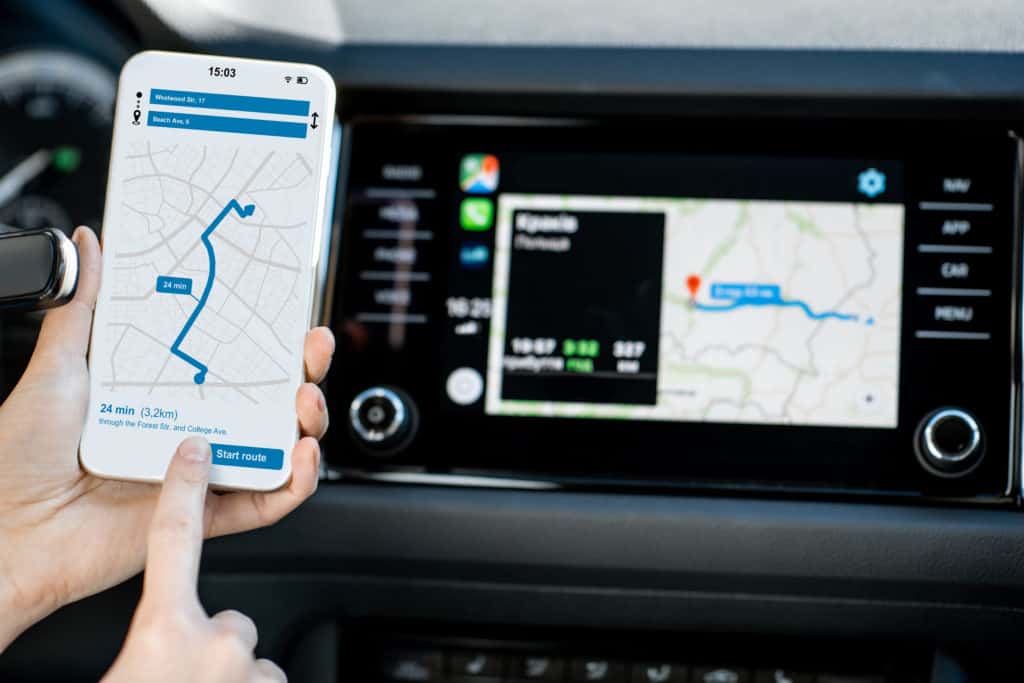Apple’s recent deployment of its Tap to Pay feature on iPhones in Japan marks a significant shift in the digital payment arena. As this technology permits users to execute transactions by simply tapping their iPhone on a payment terminal, it promises to streamline commerce and amplify user convenience. However, the adaptation of such a technology in a market known for its advanced contactless payment systems, like Suica and Pasmo, raises intriguing questions. How will Tap to Pay coexist with these established systems? What are the implications for privacy and data security? This development invites a closer examination of its potential ripple effects throughout Japan’s financial ecosystem.
Market Impact Analysis
The introduction of Tap to Pay on iPhone in Japan greatly enhances the transactional landscape for merchants and consumers, offering a faster and more secure method of payment processing. This innovative approach by Apple leverages the widespread popularity of iPhone devices, integrating seamlessly into the daily commerce activities of millions.
By adopting this feature, local merchants can expedite transactions while maintaining high standards of security, which is paramount in today’s digital age.
Furthermore, the compatibility of Tap to Pay with a range of Japanese payment platforms such as stera tap, Air Pay Touch, and Square POS cashier apps underscores its versatility and wide-reaching impact across various business sectors. This rollout not only solidifies Apple’s footprint in the contactless payments market but also catalyzes a shift towards more digitalized, frictionless customer interactions.
Consequently, businesses that embrace this technology are likely to see enhanced customer satisfaction due to the ease and speed of transactions.
While some initial limitations exist, such as the non-acceptance of certain contactless payment cards and the absence of electronic money support, the foundational infrastructure set by Apple paves the way for future enhancements and broader adoption. This strategic move marks a significant step forward in redefining the payment ecosystems in Japan.
User Experience Enhancements
With Tap to Pay on iPhone, Japanese consumers now enjoy a more streamlined and rapid checkout process. This advancement in mobile technology notably reduces the time spent at the register, as it allows users to simply tap their iPhone against a payment terminal to complete transactions.
The ease of use brought by Tap to Pay not only benefits consumers but also enhances the operational efficiency for small businesses. These establishments can now offer faster service and improve customer satisfaction without the need for traditional point-of-sale systems.
The integration of Tap to Pay with popular local payment platforms like stera tap, Air Pay Touch, and Square POS cashier apps further broadens its accessibility, making it a versatile option for a variety of business types. This feature is especially beneficial for small businesses that often experience high customer traffic and need to process payments swiftly to maintain a smooth flow of service.
Security Features Explained
Tap to Pay on iPhone in Japan incorporates Apple’s secure element to encrypt card data, guaranteeing that neither card details nor PINs are exposed during transactions. This implementation is pivotal in providing a secure payment experience, reinforcing the safety of both users and merchants engaging in digital transactions. With an increasing reliance on mobile technology for financial exchanges, the importance of robust security measures cannot be overstated.
To better understand the security features of Tap to Pay, consider the following:
- Secure Element Integration:
The secure element is a dedicated chip within the iPhone that manages the card data encryption process. It acts as a fortified barrier against potential security breaches, ensuring that all transaction data remains confidential and tamper-proof. - Contactless Payment Cards Compatibility:
This feature supports a range of contactless payment cards. By utilizing near-field communication (NFC) technology, the secure element facilitates a seamless and secure data exchange during each transaction, without physical card swipes. - Protection of Sensitive Information:
Throughout the transaction process, sensitive information such as card numbers and PINs are never stored on the device or shared with merchants. This ensures that personal data is shielded from unauthorized access or fraudulent activities.
These security features underscore Apple’s commitment to providing a safe and efficient payment environment, leveraging advanced technology to protect consumer information.
Setting Up Tap to Pay
Setting up Tap to Pay on an iPhone in Japan is straightforward, requiring only an iPhone XS or newer and the latest iOS version. This simplicity encourages small businesses to adopt this convenient payment method, as it eliminates the need for additional hardware.
With Tap to Pay, merchants can seamlessly accept contactless payments, which is particularly advantageous given the increasing preference for such transactions among consumers.
The integration with popular Japanese payment platforms like stera tap, Air Pay Touch, and Square POS further facilitates the use of Tap to Pay. Small businesses benefit from this extensive compatibility, which allows them to cater to a broader customer base without significant upfront investment.
This ease of setup and operation makes Tap to Pay an attractive option for small enterprises looking to modernize their payment systems.
Merchant Adoption Strategies
To maximize the benefits of Tap to Pay, Japanese merchants are encouraged to adopt this technology by integrating it into their existing payment systems. This innovative feature not only streamlines the transaction process but also enhances the customer experience by offering a swift and secure method to accept payments. Especially in a market where efficiency is highly valued, the ability to implement contactless payments can set businesses apart from competitors.
Here are some strategies for merchant adoption:
- Educational Workshops: Conduct training sessions for small businesses to demonstrate the ease and security of setting up and using Tap to Pay on compatible iPhone models. This will help merchants understand the operational and customer service benefits.
- Partnerships with Local Banks: Collaborate with local financial institutions to provide seamless integration support for Tap to Pay, ensuring that merchants can easily manage transactions and settlements within their existing financial frameworks.
- Incentive Programs: Offer initial fee waivers or discounted transaction rates to businesses that adopt Tap to Pay early. This can motivate a wider range of merchants to try out this new technology, thereby boosting its acceptance and normalizing contactless payments in the local market.
Comparison With Other Markets
As Japan embraces Apple’s Tap to Pay for iPhone, it is informative to examine how this technology has been incorporated in other global markets such as France, Brazil, Australia, and the US. In France, the technology’s adoption has been robust, with nine major banks and financial service companies integrating the system to support tap to pay, enhancing customer convenience and security.
Similarly, in the US, platforms like PayPal have expanded their offerings to include Tap to Pay for iPhone users through Venmo and Zettle, demonstrating a significant shift towards contactless payments across diverse sectors.
Furthermore, in Australia, companies like Square, Wix, and Stripe have not only adopted but also actively promoted Tap to Pay, signifying a strong merchant acceptance and support for this technology. This move aligns with a global trend where entities like Alaska Airlines and various international vendors now accept contactless payments through Tap to Pay, indicating a widespread international acceptance and trust in the security and efficiency of Apple’s payment technology.
Future Updates and Integrations
Looking ahead, Apple is expected to further enhance the Tap to Pay feature by integrating electronic money platforms and expanding card compatibility in Japan. This initiative reflects Apple’s commitment to refining their payment systems and tailoring their services to meet the diverse financial habits and preferences of the Japanese market.
To elucidate the planned advancements, here is a detailed outline of the anticipated updates:
- Expansion of Compatible Payment Cards: Apple aims to broaden the scope of contactless payment cards that can be used with Tap to Pay. This includes working with more Japanese banks and financial institutions to support a wider array of credit and debit cards.
- Integration with Popular Electronic Money Platforms: Future updates will likely include integration with well-known electronic money systems in Japan, such as Suica and Pasmo, enhancing the convenience for daily commuters and shoppers who rely heavily on these services.
- Enhanced Security Features: Continuous improvements in security protocols to safeguard that all transactions remain secure, especially with the expected increase in the variety of transactions following the integrations and expansions.
These integrations and enhancements are designed to make Apple’s Tap to Pay not just a payment tool but an indispensable part of the financial ecosystem in Japan.
Customer Feedback and Insights
How have Japanese customers reacted to the new Tap to Pay feature on their iPhones?
The response from the local market has been particularly positive. Many users appreciate the convenience and speed of this new method of contactless payment, which seamlessly integrates into their daily shopping routines. Customer feedback indicates a strong approval of being able to use their iPhones to quickly pay at local merchants, from large retail stores to small cafes. This enthusiasm is echoed in social media comments and online reviews where users commend the ease of setup and the added security features that Tap to Pay offers.
Local merchants, too, have expressed satisfaction with the adoption of this technology. They report an increase in transaction speed and a reduction in the physical contact required during payments, which is a significant advantage in today’s health-conscious environment.
However, some feedback has pointed out the limitations with regard to compatibility with certain contactless payment cards and the lack of support for electronic money. These areas of concern highlight the opportunities for future enhancements to make sure that Tap to Pay can fully cater to the diverse needs of Japanese customers.
MacReview Verdict
To sum up, Apple’s rollout of Tap to Pay in Japan represents a watershed moment in the evolution of digital transactions. By weaving together enhanced security measures with seamless user interactions, this technology not only fortifies the fabric of financial exchanges but also redefines the contours of consumer convenience and merchant efficiency.
As adoption widens, the implications for market dynamics and consumer behavior are expected to be profound, heralding a new era in payment methodologies.



